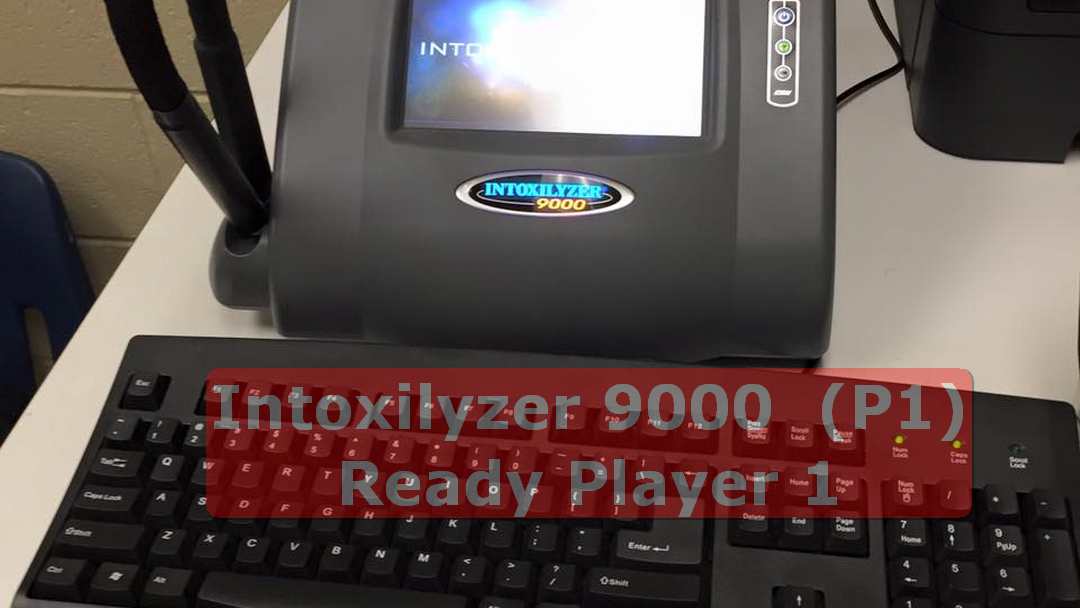The Intoxilyzer 9000 (part 1 of 2)
Roll-Out
The Michigan State Police (MSP) initiated Intoxilyzer 9000 (Intoxilyzer) training for police officers statewide, commencing in 2023. In order to participate, officers were required to complete both preliminary breath test (PBT) operator certification and PBT calibration certification.
Then officers were required to complete a PowerPoint training before attending a two-hour hands-on training session in person with MSP.
In July 2023, MSP commenced the installation of the Intoxilyzer at each jail or police agency that possessed a DataMaster DMT (DataMaster) and replaced the existing machine. By mid-October 2023, the new device was expected to be installed in all areas of the state.
Technical Differences
The DataMaster utilizes a pair of filters to effectively differentiate ethanol (the sought-after consumable alcohol by the police) from other organic compounds.
The narrow bandpass optical filters, centered at 3.44 microns, are strategically designed to isolate the specific wavelengths of light absorbed by alcohol and effectively block out any other interfering wavelengths. These filters, placed in the optical path, ensure accurate measurement of the unknown substance by precisely filtering out unwanted light.
However, it is worth noting that methanol and acetone can also be absorbed at the 3.4 micron level, meaning that the device may potentially register acetone or methanol as ethanol. This issue becomes particularly critical for individuals with diabetes who are experiencing ketoacidosis, as they tend to have acetone present in their airways.
The Intoxilyzer has four filters, including one in the 9 micron level, where ethanol and acetone do not appear. This should mean the Intoxilyzer is better able to filter out acetone and methanol.
However, because CMI, Inc. (CMI), the company that sells the Intoxilyzer, will not sell an Intoxilyzer to any entity other than law enforcement, this principle cannot be tested.
The Intoxilyzer’s filters utilize pulsed infrared technology, effectively eliminating the need for chopper motors or mechanical filters in the analytical system. Instead, it employs a digitally controlled pulsed infrared source, eliminating the use of moving parts and thus enhancing the durability of the filter mechanism, ensuring long-lasting performance.
In addition, the DataMaster used a quartz internal standard to make sure the machine remained in calibration. Quartz is a stable material with a known absorption rate.
The DataMaster would move a thin quartz plate in front of the infrared beam and the machine would compare the absorption to the known absorption rate at its initial calibration. If it was within tolerance, the DataMaster would report, “internal standard verified.”
The Intoxilyzer has done away with the quartz internal standard in favor of an actual dry-gas test to verify that the machine remains in calibration.
While CMI touts the dry-gas test as a better internal standard, there are two issues that may make it not as good as a constant standard like the quartz plate.
First, the dry gas is supposed to be measured at 0.08, but the Intoxilyzer allows any result between 0.074 to 0.084 to verify the machine’s internal standard.
The target of 0.08, which is affected by changes in barometric pressure, is addressed by the dry-gas test through an automated adjustment process. This adjustment is made using an algorithm including a correction factor based on the barometer reading at the time of the test.
Related Articles
Michigan: No Evidence of Widespread Discriminatory Policing Practices
No Evidence of Widespread Discriminatory Policing PracticesNever Ending Quest January 18, 2024 In the department’s continuing work to research and address racial disparities in traffic stops, independent consulting firm CNA has determined that racial disparities...
DEA – AG Miss Deadline to Respond on Cannabis Rescheduling
The Drug Enforcement Administration persists in maintaining secrecy around their process, disregarding a congressional request for transparency.Never Ending StoryThe Drug Enforcement Administration (DEA) and Attorney General Merrick Garland missed a Feb. 12 deadline...
CRA Executive Director Hanna Applauds Whitmer’s FY25 Budget
No Evidence of Widespread Discriminatory Policing PracticesNever Ending Quest February 15, 2024 LANSING, MI – Today, Cannabis Regulatory Agency (CRA) Executive Director Brian Hanna applauded Governor Gretchen Whitmer’s Fiscal Year (FY) 2025 Executive Budget...
Cannabis Tax Payments Being Distributed in Michigan
Adult-Use Marijuana Tax Payments Being Distributed In MichiganHere's what they say...Treasury: Adult-Use Marijuana Payments Being Distributed to Michigan Municipalities and Counties; More Than $59.5 Million Going to 224 Municipalities and Counties. Sales of "legal"...
More Posts

Our Kids are Dying of Drug Overdoses
THE KIDS AREN’T ALRIGHT, THEY’RE DYING OF DRUG OVERDOSESFrom May 2022 to May 2023, the Centers for Disease Control and Prevention reported an alarming 37 percent...

How DUI Charges Impact Your Child’s Future
In Michigan driving is considered a privilege. with this privilege comes immense responsibility, especially when it comes to driving under the influence (DUI) as well...

Rescheduling Marijuana Would Be a Threat to Public Health
Kevin Sabet of Smart Approaches to Marijuana says policy makers need to learn from their mistakes with hemp when considering marijuana rescheduling. It’s rare for...

Meet MiChap
Climate and Health Adaptation ProgramYou must save yourself from yourself.Meet MICHAPOur Vision: Michigan's public health system fosters equitable health and wellbeing...

Feds discover new methods to distinguish hemp and marijuana to assist crime labs
Federally funded researchers have uncovered two methods to divide and diversify the difference between hemp and cannabis to assist to crime labs. Because Cannabis is...

Laws passed by Michigan lawmakers in 2023 will take effect
Several new laws passed by Michigan lawmakers in 2023 will take effect on Tuesday, Feb 13, 2023Making use of the first combined Democratic majority in the state House,...

Legal Consequences of Rescheduling Marijuana – 2024
Legal Consequences of Rescheduling Marijuana Jan 2024 a report from the Congressional Research Service.

Scientists Discover The Reason Cannabis Causes The Munchies
For the first time, scientists have uncovered the precise neurological impacts of cannabis use that give rise to the phenomenon famously referred to as the "munchies,"...

Maker of CBD products asks court to decide
The Petitions of the Week column highlights a selection of cert petitions recently filed in the Supreme Court. A list of all petitions we’re watching is available here....

Transcription of the 1789 Joint Resolution of Congress Proposing 12 Amendments to the U.S. Constitution
This information was taken from archives.gov. One should assume it is factual... but assuming information is a fact is a perilous assumption. Here is what you paid...













